The Internet of the Mind
The neural networks of our brain and central nervous system are comparable to but infinitely more sophisticated than the fiber-optic network connecting millions of computers together in a single network that we have come to know as the Internet.
One main difference is that instead of millions of computers — our brain has up to 100 billion“computers” called neurons connected together in a biological network that would put AT&T to shame. And, just like the Internet, our brain has networks… embedded in networks… embedded in networks… and so on.
A neural network is a cluster of neurons connected together to form a “database” of encoded information such as thoughts, feelings, beliefs, programmed reactions, emotions, and even physiological data.
Neural networks are the actual biological location of change. Change does not take place without re-wiring of existing neural connections or creating entirely new connections. We call these biological changes “learning something new” and it matters not if it is good or bad learning. Sooner or later new learning moves from inside physical changes (neuronal connections) to outside physical changes (actual behavior). This is why we can literally “become” what we think about most of the time…
If we frequently ruminate about depressive or obsessive thoughts, we are building a neurological database for depression or obsession and can experience everything that goes with it! If we think of each brain cell (neuron) as a computer and a neuron’s dendrites and axons as the fiber-optics, then try to fathom this…
Anatomy of a Biological Supercomputer
There are up to 100 billion neurons in our brain. Each neuron has up to 100 thousand dendrites making over 100 trillion constantly changing connections. According to John Ratey, MD, author of A Users Guide to the Brain:
“The neuron and its thousands of neighbors send out roots and branches – the axons and dendrites – in all directions, which intertwine to form an interconnected tangle with 100 trillion constantly changing connections…
There are more possible ways to connect the brains neurons than there are atoms in the universe. The connections guide our bodies and behaviors; even as every action we take physically modifies their patterns…
Thanks to sharp imaging technology and some brilliant research, we now have proof that [network] development is a continuous, unending process. Axons and dendrites and their connections can be modified up to a point, strengthened, and perhaps even regrown. – A Users Guide to the Brain, (page 20)
Each network has a function. We have simple networks for daily routines…
How to tie our shoes
How to brush our teeth
How to shave
And more complex networks for such things as:
How to do relationships
How to perform various duties at work
How to drive a car
How to read
Who I am
Belief Systems
Neural networks are why you don’t have to re-learn everything, including the alphabet, every time you want to read a book!
A Neural Network Demonstration…
Please cross your arms in a comfortable position across your chest… You have just accessed your arm-crossing neural network – a small cluster of brain cells connected together and programmed for this behavior…
Now take a close look and notice exactly how they are crossed… Got it? Great, now try to cross them in exactly the opposite way. You should notice that the first way is comfortable and automatic…you don’t even have to think about it.
The new way is uncomfortable if you are able to do it at all…most people experience a momentary confusion and others freeze up totally and can’t do it. The new, uncomfortable way is new behavior for which you do not yet have a network.
You could create a network for doing it the new way, but it will take a few weeks of discipline and repetition. This is why changing habits and behaviors can be difficult… it is simply easier to do it the way we are programmed to do it.
If you happen to be ambidextrous you may be able to do it comfortably and easily both ways. This simply means you have a neural network for crossing your arms both ways, writing with either hand, etc.
Four Stages of Learning Something New
With concentration, dedication, and discipline, it only takes several weeks of effort to feel like a new behavior is becoming part of you or “second nature.” Then, practicing that behavior over and over (repetition), it becomes easier and easier.
Seeing the improvement in competence and skill, or “getting good” at the new behavior, can add intensity to the experience. And with enough repetition, soon it becomes automatic. When this happens, the new behavior has dropped beneath the surface of awareness and is taken over by the subconscious mind; i.e., it becomes an automatic program otherwise known as an implicit memory network.
Remember the two ways to “burn a network into your neurology” is through intensity and repetition. If you want to improve at playing the piano what do you have to do? That’s right -— practice, practice, and then practice some more. Eric Clapton started playing the guitar early in his childhood. Some of us believe he has become “one with the guitar.”
Learning as it relates to self-preservation, such as the survival skills and developmental tasks of childhood, is accomplished at the subconscious level. The learning process for information related to self-actualization (growth) requires conscious effort and self-discipline. This learning process can be boiled down to transforming explicit memory into implicit memory (growing a neural network). There are four stages one must go through in learning a new behavior or routine:
Unconscious Incompetence – Before people even become aware that they need or want to learn a new behavior or skill, they are incompetent it and unaware of just how incompetent they really are at the behavior. For example, I may decide I’d like to go bowling although I have never tried it before.
Conscious Incompetence – once an awareness of the desire to learn the behavior arises, the awareness of incompetence soon follows. I throw my first ball and it goes into the gutter, as does the second, and even the third! I suddenly realize that I SUCK at bowling! (The reluctance to go through this awkward, clumsy stage of learning is often the reason some people won’t try new things.)
Conscious Competence – If I keep at it and push through the initial stages of learning, with the help of explicit memory I start knocking some pins down and eventually get a spare or even a strike once in a while. As the new behavior is practiced repeatedly, skill is developed and, in the next stage of learning, becomes part of me through subconscious processing making it part of my implicit memory.
Unconscious Competence – Once a certain level of proficiency is reached the new behavior or routine becomes automatic or “Second Nature.” Now I can put a spin on the ball and make it do tricks as it rolls down the lane. This is because I have become ONE with the bowling ball! In other words, it becomes programmed into the neural networks of implicit memory.
Conscious effort and these four stages of learning are what we have to rely on to gain access and “thaw out” the frozen feeling-states of childhood abandonment, shame, and contempt. Therein lies our challenge! By now, the reader is aware that there is a significant difference between the storage and handling of data concerning self-preservation and information concerning self-actualization –- data regarding survival is stored on protected networks of the mind, while growth-oriented data are stored on open, accessible networks, which are constantly being updated.
One must apply conscious effort and daily disciplines, proceeding through the above stages of learning for self-actualization, in order to re-wire survival strategies that have been subconsciously encoded and protected on neural networks of self-preservation. (Don’t worry, it’s a lot easier than it sounds, but it will require a new way of life.)
Fortunately, this does not mean we must get rid of the old programming such as fear of abandonment, obsessions and compulsions, toxic shame, toxic relationship patterns (i.e Drama Triangles, Punishment and Forgiveness cycle, Distance and Pursuit, Enabling, and Mind Games) etc –- deleting this information regarding self-preservation is not the goal, and is probably impossible without surgery anyway. (Hey, it’s possible! they actually tried surgically altering the brain for a while. The procedure was called a lobotomy.)
But our methods are somewhat less invasive. It will involve creating new alternatives on self-actualizing (i.e., growth-oriented) neural networks that will fill in the developmental gaps of unmet childhood dependency needs and initiate an ongoing healing process for the frozen feeling-states of abandonment, shame, and contempt. In order to do this, we must develop the means and technology to communicate directly with our neurology.
Technologies of Change
Feeling-states, ego-states, and neural networks are synonymous terms used in describing how systems of beliefs, feelings, instructions, coping skills, and behaviors become automatic “programs” that are stored in the implicit memory of the subconscious mind-activated by the brain on cue. As indicated in the last chapter, one must have a method of communicating with and about their neurology in order to effect changes in the neural circuitry of the brain.
Therapeutic constructs such as the ideas of parts, ego-states, feeling-states and so forth provide the technology suitable to that end. For our purposes here I will borrow the ego-state maps from the field of Transactional Analysis (TA), more specifically, a branch of TA known as Structural Analysis.
Networking the Brain
You probably already know that embedded within the Internet are smaller networks, like AOL or MSN…inside those networks are even smaller networks… networks, embedded in networks, embedded in networks… all the way down to the two or three computers that make up an average home network.
The neural network of our mind is structured in much the same way…though incredibly more complex and sophisticated. Inside this huge neural network are smaller neural nets, or cognitive maps, where clusters of neurons and dendrites are assigned to particular behaviors, memories, beliefs, thought patterns, etc…
Dendrite and axon connections tie all the neurons together to make up the “Internet of the Mind”. Each neuron has an axon and as many as 100,000 dendrites. Axons are the part of the neuron that packages and, by way of an electrical impulse generated by the neuron, sends chemicals called neurotransmitters out into a gap between an axon and dendrites.
The Gap is known as a synapse (See Image Below). Dendrites are responsible for receiving the electrochemical signals and sending them down the line into the cell body of the neuron they are attached to. These neurotransmitters, or neurochemicals, contain bits of data (hear-see-feel-taste-smell data). Dendrites receive the data (learning) and the axon sends the data (teaching).
Creating and Re-Wiring Neural Nets
We began creating and growing dendrite connections the moment we were conceived… Later on, we create networks for sitting up, walking, talking, reading, and so on. A network contains explicit and implicit data for all the skills, knowledge, emotions, beliefs, physiology, motor skills, thoughts, memories and experiences that have to do with that function or behavior. We have networks for identity and self-esteem… We have networks for how to drive a car, how to swim, how to be a good spouse, how to do our job. We weren’t born with these networks…we had to create and grow them.
For example… do you remember learning to drive a car? Remember how nerve-wracking that was? All those things you had to learn, think about, and remember to do – all at the same time! The rules of the road…when to hit the brake…dad teaching you to parallel park…starting and stopping on a hill with a clutch…taking your drivers test…flunking the test!
Most of us were definitely not born with a driving network installed. But now most of us can do those things in our sleep…how often do you drive from point A to point B and not remember the trip? Yep, we have become ‘one with the vehicle’… In others words, driving has become automatic because we have developed a very sophisticated driving neural network. (My wife would disagree in my case)
We also have limiting or unhealthy neural networks devoted to addictions, self-sabotage, phobias, anxieties, depression, and other unwanted feelings and behaviors. But the good news is that the subconscious mind uses a process known as synaptic pruning to rewire these unhelpful neural networks!
Networks you want to re-wire or new ones you’d like to create, such as one for regular exercise, will take several weeks of consciously directing your attention toward it. With concentration, dedication, and discipline it only takes several weeks of effort to feel like the new behavior is becoming part of you or “second nature” – Continuing the behavior becomes easier and easier.
When this happens the new behavior has dropped beneath the surface of your awareness and is taken over by your subconscious mind – it becomes an automatic program otherwise known as implicit memory network.
Remember the two ways to ‘burn a network into your neurology’ is through intensity and repetition. If you want to improve at playing the piano what do you have to do? That’s right – practice, practice, and then practice some more… Eric Clapton started playing the guitar early in his childhood. Some of us believe he has become ‘one with the guitar’.
In most cases, it is not that difficult to re-wire an existing network or create a new one. In fact, new networks are frequently being created automatically on a regular basis – the result of new learning and significantly intense experiences. For example, on a special day in your life… Perhaps the day of your wedding or the birth of a child… the intensity of that experience imprinted the sights, sounds, smells and feelings of it into your brain – “burning it into your neurology”.
Twenty years later all you have to do is think of it, have an anniversary, hear a song or look through a photo album and all that comes back to you.
[Some content here was originally published first on our Internet of the Mind Blog at: https://serenitycreationsonline.com/stages-of-learning.html and https://serenitycreationsonline.com/neural_networks.html]

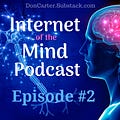



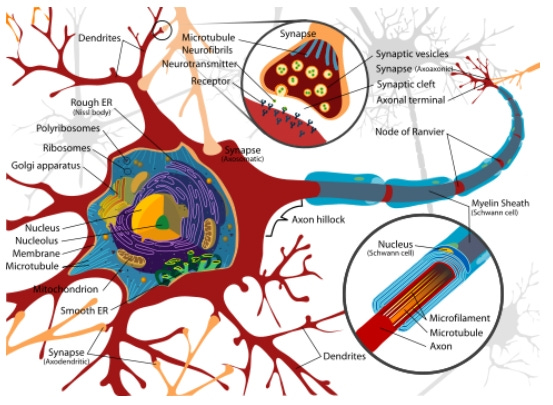




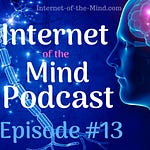



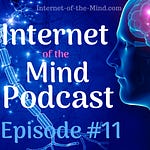





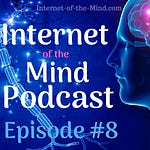

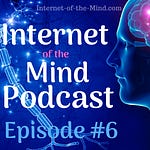
Internet of the Mind Podcast 2